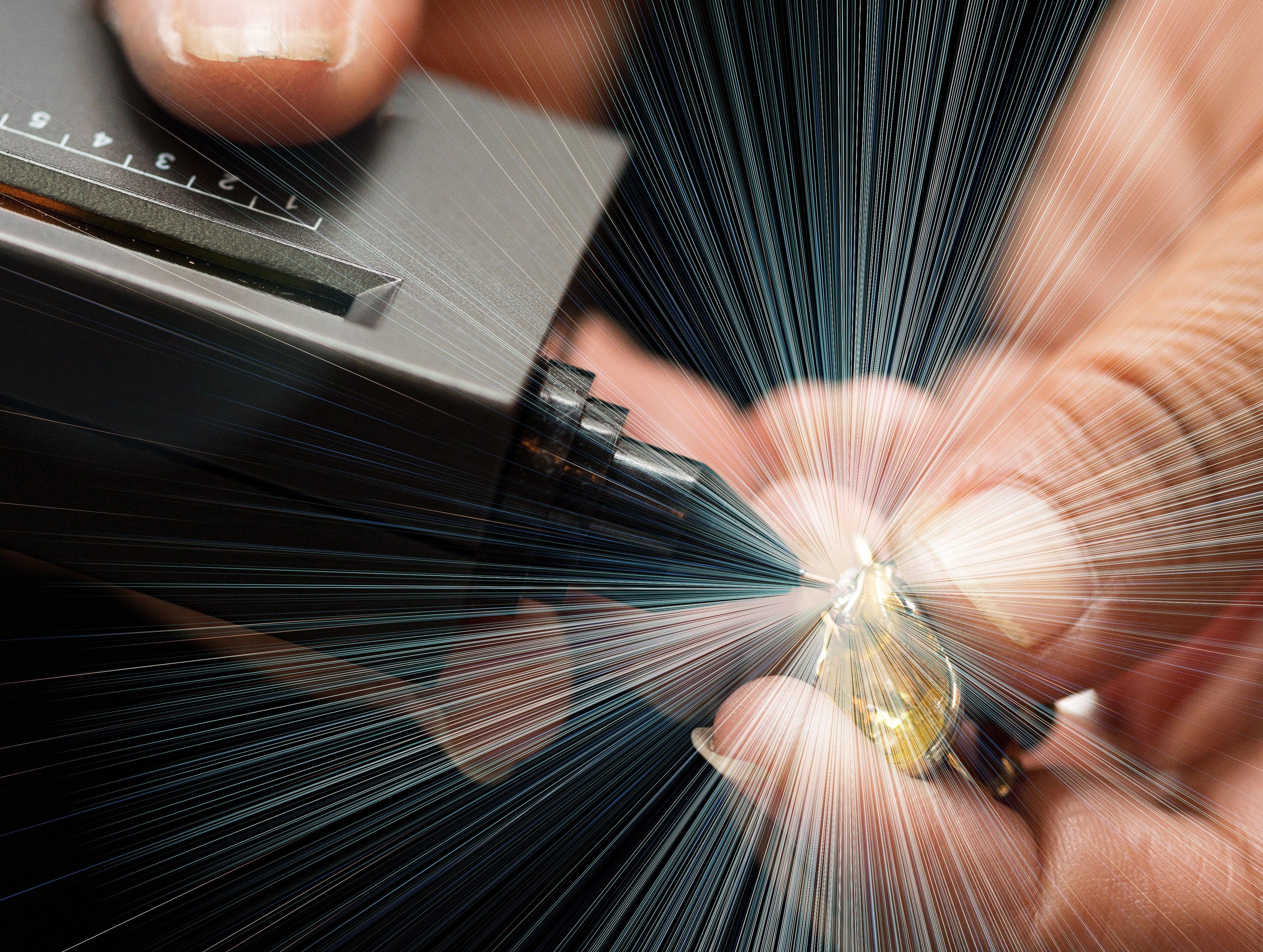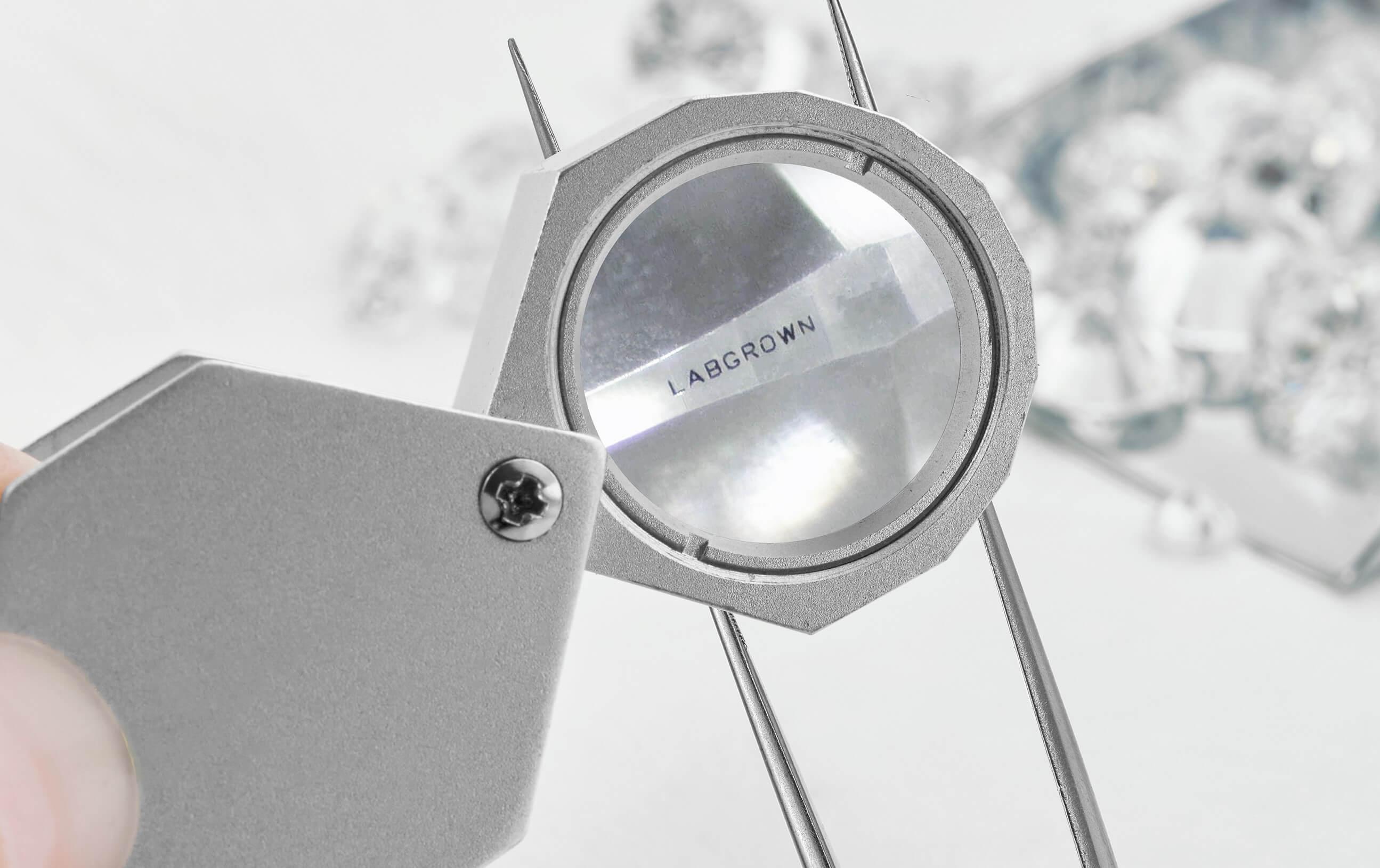
Do Lab-Grown Diamonds Test as Diamonds?
How do you know if a gem is a diamond? Or if it is a real diamond? What about whether it's a lab-created diamond (aka a lab-grown diamond) or a mined diamond? These are questions we get quite a lot at Michael Gabriels, so we wrote this blog to discuss the answers to them and more.

Questions we will answer:
- What is a lab-grown diamond?
- Standard tests to determine if a gem is a diamond
- How to test if a diamond is lab grown or mined?
- Can a jeweler tell the difference between lab-grown diamonds and natural diamonds?
- Are there fake diamonds that pass as diamonds?
- Do lab-grown diamonds pass as moissanite?
- How can you tell if a diamond is lab grown?
- Should you buy a diamond without a certificate?
5 Basic Points of Lab-Created Diamond Testing:
- Lab-created diamonds are atomically identical to mined diamonds; both are pure carbon crystals in a specific atomic matrix.
- Lab-created diamond rings have the same optical and conductive properties as mined diamonds.
- You cannot tell the difference between lab-grown diamonds and natural diamonds with the naked eye.
- Even professional jewelers and gemologists cannot tell the difference between the two with the naked eye, a diamond loupe, or even basic diamond testing equipment.
- The only way to know for certain if a diamond is lab grown or mined is to send to it a laboratory with specialized equipment.
What is a lab-grown diamond?
One of the questions we get a lot at Michael Gabriels, is “Are lab-created diamonds real diamonds?”
YES!
Lab-created diamonds are real diamonds; they are pure carbon crystals that have been grown from a seed diamond in laboratories under conditions replicating those in which diamonds form in nature.
They have the same atomic and chemical properties, and can even have similar kinds of inclusions and blemishes.
Lab-grown diamonds have the same optical and conductive properties as mined (natural) diamonds.
So, since lab-created diamonds are identical to mined diamonds, they should test as real diamonds.
Standard tests to determine if a gem is a diamond
You can tell if a gem is a diamond in a number of ways.
With basic equipment, you can test for density. Diamonds have a density of 3.51 gm/cm3.
If the gem you are testing scratches a known piece of moissanite or corundum (a sapphire or a ruby), (if its density is close enough), it may very well be a diamond. However, if you don't want those other stones scratched, don't do this.
There are a number of diamond testers on the market that range from around $20 to tens of thousands and that range from the size of a pen to a machine larger than a small refrigerator.
There is some home testing you can perform, such as determining density, hardness and potential luminescence with UV lighting, though we caution against it. To begin with, unless you are working with loose diamonds, you won’t be able to accurately determine density unless you remove the stone from its setting.
Then, of course, you have to be able to do that and put it back without breaking the setting… not an easy job, which is why we at Michael Gabriels leave that to professionals.
And of course, if your stone is not a diamond, it could be potentially damaged by some tests. What if you have a beautiful white sapphire, not a diamond- do you really want to risk a scratch on what is also a valuable gem?
How does a diamond tester work?
Most widely available diamond testers measure the electric and thermal conductivity of a gem. Real diamonds have high thermal conductivity, and they are among the best electrical insulators known. Since diamonds have unique thermal and electrical conduction properties, this is one of the most reliable ways to determine if the gem in question is a diamond.
Can a diamond tester tell if a diamond is lab grown?
In truth, no. Most standard diamond testers are able to measure the conductivity of a gem. Since lab-created diamonds and mined diamonds have the same conductive properties, the diamond tester will be unable to determine one from the other.
Can you test if a diamond is lab grown versus natural?
On your own, there are no tests you can do to determine if a diamond is mined or lab-created. Laboratories with the proper equipment are able to analyze gems with specialized equipment. Then they can study the stone on an atomic level, allowing them to determine within a reasonable range of accuracy (a fraction of a percentage) whether a diamond was grown in a lab or was mined from nature.
There are some characteristics that show up more often in mined diamonds than lab-created diamonds, such as certain colors that we are unable to produce to the same degree in labs at the moment. However, you might still need a laboratory with special equipment to be sure, since some coloring can be artificially introduced.
While all diamonds can be potentially phosphorescent, lab-created diamonds are never fluorescent. However, neither are many mined stones, so that's not really a reliable diamond test.
Can a jeweler tell the difference between lab-grown diamonds and natural diamonds?

Most jewelers have basic diamond testing equipment, which will allow them to tell if a gem is a diamond at all. But jewelers generally do not have the kind of specialized equipment that would allow them with certainty to tell the difference.
No one, including professional jewelers and gemologists, can tell if a diamond is lab-grown or natural with the naked eye, no matter how experienced they are or how good their vision is. Nor can they tell if a diamond is lab-created or mined by using a loupe, except in the case where an identification number is embedded in the stone on its girdle.
These numbers are etched by the laboratories that have examined and evaluated them. Most accredited laboratories will put “LG” for lab-grown before the number if it is a lab-created diamond.
Are there fake diamonds that pass as diamonds?
There are plenty of diamond simulants available on the market, such as cubic zirconia, moissanite, white sapphire, white topaz and many more. None of them have the same combination of thermal, electrical and optical properties, or hardness as diamonds, so none of these or others will show up as diamonds in reliable diamond tests.
Do lab grown diamonds pass as moissanite?
Years ago, when the industry was small, and the science was more limited than it is now, some diamond testers were unable to determine the difference between lab-created diamonds and moissanite. And occasionally, it was reported that a stone that was a lab-grown diamond passed as moissanite.
However, in the last decade, industry testing standards have changed, and now all reliable diamond testers test for both thermal and electrical conductivity, accurately determining diamonds in all cases.
How can you tell if a diamond is lab-created?
- Check the certificate that comes with the diamond from the laboratory that evaluated it. IGI and GIA both specify whether a diamond is lab-grown or mined.
- Check the girdle of the diamond to see if it has been etched with a code from a laboratory. IGI and GIA both put “LG” for lab-grown in front of the number to specify its origin.
- If you do not have a certificate, and there is no ID on the girdle, the most reliable way to determine if a diamond is lab-grown or mined is to send it to an accredited laboratory. There, professional gemologists with the proper equipment can test the stone and send it back with a report or certificate indicating its origin, as well as many pieces of important information on the 4Cs, its proportions, and more.
Should you buy a diamond without a certificate?
DO NOT BUY A DIAMOND THAT DOES NOT HAVE A CERTIFICATE FROM AN ACCREDITED LABORATORY!!!
We beg you, from the bottom of our hearts, to never, ever, buy a diamond that does not come with a certificate. Here are 3 reasons why:
- You won’t be able to tell if it is a lab-created diamond or mined diamond, or even if it's a diamond at all. It could be a fake.
- In the same vein as above, you won’t be able to tell if it has been marketed legitimately, or if it is stolen, or a conflict diamond, known also as “blood diamonds.”
- You won’t be able to accurately determine or know the color, clarity or cut of the stone.
Conclusion
Whether in lab-grown diamond earrings or a lab-grown diamond engagement ring, all lab-created diamonds today will be recognized as diamonds by reliable diamond testers, though they cannot determine whether or not the diamond is lab-grown. To do that, you need professional analysis, ideally from an accredited laboratory.
At Michael Gabriels, all of our diamonds are tested by IGI or GIA and come with the certificate from the lab that evaluated it.




